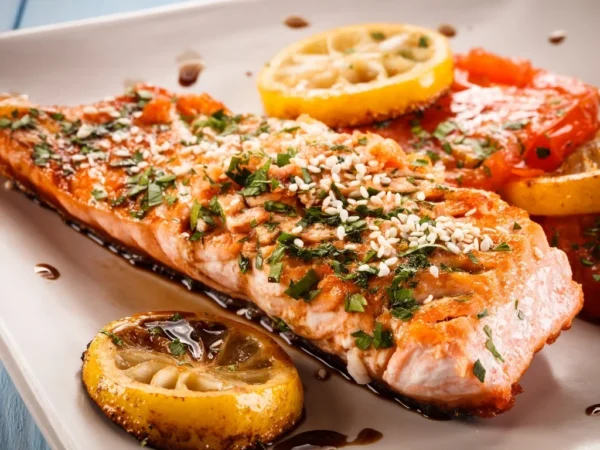CrossFit is unlike any other workout. It blends Olympic-style weightlifting, gymnastics, cardio, and metabolic conditioning into one demanding program — which means nutrition for CrossFit athletes has to do more than simply “fuel workouts.” It must support power, endurance, recovery, and adaptation, all while keeping the body lean and resilient.
If you’ve ever felt drained halfway through a WOD or struggled to recover for the next session, nutrition may be the missing link. This guide breaks down a practical, customizable CrossFit diet plan that fits your training intensity, goals, and lifestyle. A good CrossFitter’s diet is never one-size-fits-all — it’s science-based, flexible, and refined through experience.

Why CrossFit & nutrition matter
CrossFit’s training demands constant energy turnover. You might lift heavy one moment and sprint the next, pushing multiple energy systems at once. That’s why a generic “fitness diet” often fails — your body needs enough carbohydrates to power those efforts, protein to repair muscle, and fats to keep hormones and joints healthy.
Studies on competitive CrossFit athletes have shown a common pattern: many under-fuel, especially when it comes to carbs. Low-carb approaches may work temporarily, but over time, they can reduce training capacity, delay recovery, and even increase injury risk.
The best diet for CrossFit adapts to the rhythm of your training cycle. Heavy lifting and high-volume days need more carbs; recovery days can scale back. Hydration, sleep, and recovery practices also play major roles. The goal is to build a nutrition plan that evolves with your performance, not one that restricts it.
Macronutrients for a CrossFit diet plan
Fueling CrossFit performance starts with understanding your macronutrients — carbohydrates, protein, and fat. Each plays a distinct role in powering workouts, building strength, and supporting recovery.
Getting the right balance can mean the difference between hitting a new PR and burning out mid-WOD. The following breakdown shows how to structure your CrossFit diet plan for sustained energy, muscle repair, and long-term progress.
Carbohydrates
Carbs are the main energy source for high-intensity efforts like AMRAPs, sprints, or Olympic lifts. Without them, your body shifts toward slower, less efficient energy systems.
- Recommended intake: 5–8 grams per kilogram of body weight per day (adjust higher on intense training days).
- Good sources: rice, oats, potatoes, quinoa, fruit, and starchy vegetables.
- Timing: Prioritize carbs before and after workouts. A pre-WOD banana and post-WOD rice bowl help restore glycogen for performance and recovery.
Protein
Protein drives muscle repair and adaptation — critical for CrossFit’s constant lifting and conditioning.
- Suggested intake: 1.6–2.2 g/kg body weight daily (or about 0.7–1.0 g per pound).
- Best sources: lean meats, eggs, fish, dairy, tofu, and legumes.
- Avoid: Excessive fried or processed fats, which can cause inflammation and sluggish recovery.
Fats
Fats support hormone production, cell structure, and lower-intensity energy needs. They also keep you satiated and support joint health.
-
- Target: Around 30% of daily calories from fat.
- Best sources: olive oil, avocados, nuts, seeds, and fatty fish.
- Avoid: Excessive fried or processed fats, which can cause inflammation and sluggish recovery.
Micronutrients, hydration, and supplements
CrossFit’s high sweat rate increases the risk of losing key minerals. Magnesium, potassium, and iron are especially important for muscle function and oxygen transport.
Hydration should go beyond water — consider electrolytes for long or hot sessions. A simple mix of water, salt, and a dash of fruit juice works well.
Effective supplements for most CrossFitters include:
- Whey or plant-based protein powder: convenient for recovery.
- Creatine monohydrate: boosts power output and muscle growth.
- Caffeine or pre-workout supplements (in moderation): enhance focus and performance.
Always use supplements to complement, not replace, a balanced CrossFit eating plan.
Meal timing & strategy in your CrossFit diet plan
Nutrient timing matters — what and when you eat affects your training output and recovery speed.
- Pre-workout (1–3 hours before): carbs + moderate protein, low fat/fiber (e.g., chicken with rice or oatmeal with whey protein).
- During long sessions or competitions: small carb boosts (sports drinks, bananas, or gels).
- Post-workout (30–60 min after): focus on fast-digesting carbs and lean protein to refuel and repair (e.g., rice bowl with grilled fish).
- Daily structure: 3–5 balanced meals spaced throughout the day. Adjust timing based on when you train — morning athletes may need a substantial breakfast, while evening trainers should plan recovery meals before bed.

Sample CrossFit diet plan
Below is a sample one-day menu for moderate training days. Adjust portions for your size and energy needs.
Morning WOD (7 AM)
- Pre-workout: Banana + whey protein shake
- Post-workout: Egg omelet with spinach and sweet potato
Lunch
- Grilled chicken breast
- Brown rice
- Steamed vegetables
- Olive oil drizzle
Snack
- Greek yogurt with berries and almonds
Dinner
- Salmon with quinoa and roasted vegetables
- Small salad with olive oil and vinegar
Evening (if hungry):
- Cottage cheese or protein smoothie
For high training days, increase carb portions — extra rice, oats, or fruit. For rest days, reduce carb intake slightly while maintaining protein for muscle preservation.
Vegetarians can replace animal proteins with tofu, tempeh, lentils, and quinoa. Gluten-free athletes can swap wheat-based carbs with rice, potatoes, or certified gluten-free oats.
Adjusting your plan over phases & performance goals
Your CrossFit diet plan should evolve with your goals:
- Cutting phase (fat loss): Create a slight calorie deficit while keeping protein high to preserve muscle.
- Maintenance phase: Eat around maintenance calories, balancing macros for performance.
- Gain phase: Increase total calories with clean carbs and healthy fats to build lean muscle.
Carb cycling can also help — higher carbs on heavy training days, lower on rest days.
Avoid extreme diets like keto or zero-carb plans. These may impair high-intensity output and recovery, since glycogen is the preferred fuel for CrossFit. Instead, focus on moderation and smart adjustments.
Progress tracking is essential. Monitor energy, performance metrics, and recovery patterns. Nutrition should enhance your training, not restrict it.
When and why sports nutrition counseling helps
Even with the best planning, individual factors — such as gut tolerance, hormonal balance, or food sensitivities — can affect results. That’s when professional support becomes invaluable.
A sports nutrition dietitian can help:
- Personalize your macronutrient targets and timing.
- Troubleshoot digestion, fatigue, or plateau issues.
- Guide safe supplement use.
- Adjust nutrition during competition prep, recovery weeks, or deloads.
Health Loft’s sports nutrition counseling offers science-based, athlete-centered support to fine-tune your CrossFit diet plan. Whether you’re preparing for your first Open or refining recovery between sessions, expert guidance ensures your plan matches your body’s unique needs.
How to monitor & adjust your CrossFit diet plan
Stay responsive to your body and results. Track key indicators such as:
- Performance: WOD times, PRs, and endurance.
- Body composition: fat-to-muscle ratio.
- Energy & recovery: sleep quality, soreness, and mood.
If you notice fatigue, slower recovery, or plateaus, it’s time to reassess. Use food logs, body scans, and feedback from your coach or dietitian. Small tweaks — not drastic changes — keep progress sustainable.

Start your personalized CrossFit diet plan with Health Loft
To perform your best in CrossFit, your nutrition must be as strategic as your training. A well-structured CrossFit diet plan balances carbs, protein, and fats, timed to support high-intensity sessions and steady recovery. It adapts to training cycles, tracks progress, and evolves as you do.
Start simple: build a baseline plan, track how you feel and perform for 4–6 weeks, and adjust gradually. For a truly personalized approach, work with a Health Loft sports nutrition dietitian. They can help you craft a good diet for CrossFit that aligns with your goals, training demands, and body’s needs — setting you up for consistent strength, endurance, and performance growth.













